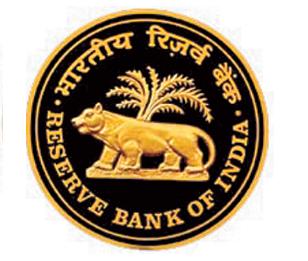One of the important central banking functions of the Reserve Bank of India (RBI) is the maintenance of the external value of the rupee. As such it has been given the custody of foreign exchange reserves and sole agency for the administration of exchange controls in India. All receipts and payments in and out of India require general or special permission of the RBI. The dealings in foreign exchange and foreign securities in India, payments to person resident outside India and export and import of currency notes, bullion or precious stones etc., are subject to general or special permission of RBI or are prohibited.
Indian Financial System
Role of Stock Markets in an Economy
Financial market is one of the components of financial system. Financial market facilitates the efficient allocation of financial resources of the economy so as to achieve socially desirable and economically productive purposes. Existence of an efficient financial market is a pre requisite for promoting savings, investments and consequent economic growth.
Financial markets are extremely important to the general health of an economy. The main function of financial system, viz. capital formation takes place practically in financial markets. Financial institutions work as financial intermediaries and establish link between suppliers and users of funds in financial market. Financial products, including the supply of credit, mortgages, company shares and insurance, are bought and sold in primary and secondary financial markets.… Read the rest
Organization of Foreign Exchange Department
The Foreign Exchange department, which is also being called as the International Banking Division, is one of the important departments of the banks operating in international market. In India also all scheduled commercial banks, both in the nationalized or non-nationalized sectors, do have Foreign Exchange departments, both at their principal offices as well as offices, in metropolitan centers. This department functions independently under the overall change of some senior executive or a senior officer well-versed in foreign exchange operations as well as in the rules and regulations in force from time to time pertaining to foreign exchange transactions advised by various government agencies.… Read the rest
History of Derivatives Market in India
Interestingly, derivatives have been existed in India since long time in one form or the other. But, they were not liberalised nor efforts were put to enlighten the public. The area of existence of derivatives was in commodities, it was association by traders in Bombay which was named as Bombay Cotton Trade Association (BCTA) in 1875 and started dealing with the futures contracts. By the starting of 19th century derivatives in India crawled to top making India one of the worlds largest in futures industry. But, in the early 1952 Government banned trade in cash-settlements and option contracts. As a result derivatives’ trading was shifted to informal forward contracts which were a normal practice.
Junk Bonds in India
Sharp movements in the Indian equity market may be par for the course. But when it comes to the market for corporate bonds, it’s constantly stagnant. The reason is, we don’t have a corporate bond market. But this is overwhelmingly dominated by government securities (about 80% of the total). Of the remaining, close to 80% again comprises privately placed debt of public financial institutions. An efficient bond market helps corporate reduce their financing costs. It enables companies to borrow directly from investors, bypassing the major intermediary role of a commercial bank. One of the important instruments in corporate market is Junk Bonds which could be great source of financing for countries like India where markets are not much regulated.… Read the rest
Types of Investors in the Stock Market
There is a wide diversity among investors, depending on their investment styles, mandates, horizons, and assets under management. Primarily, investors are either individuals, in that they invest for themselves or institutions, where they invest on behalf of others. Risk appetites and return requirements greatly vary across investor classes and are key determinants of the investing styles and strategies followed as also the constraints faced.
Primarily investors can be categorized into two groups:
- Individual Investors: While in terms of numbers, individuals comprise the single largest group in most markets, the size of the portfolio of each investor is usually quite small. Individuals differ across their risk appetite and return requirements.
